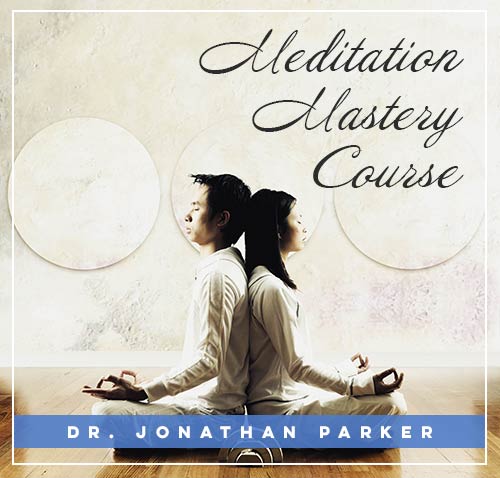Walking Meditation: Finding Tranquility in Movement

Before diving in, please note: This post is for informational purposes only. If you’d like to know more about how we approach topics, feel free to check out our friendly Disclaimer Page.
Hey there, amazing readers! 🖐️ Just a quick note: yes, we know there are a lot of ads here. Trust us, we get it—it’s not the prettiest look, but they help us keep this blog alive and kicking. Those pesky little ads cover the costs of all the behind-the-scenes magic, from hosting and tech stuff to creating content we hope you’ll love.
We’re committed to delivering quality posts, and your support (even just sticking around despite the ads) means everything to us. So, bear with us, and thanks for helping us keep the good vibes rolling. Now, on to the fun stuff! 😉
TRANSLATE BUTTON AT THE END OF THE ARTICLE
A Quick Overview: Introduction to Walking Meditation
Walking meditation is a practice that combines the physical activity of walking with mindfulness techniques to cultivate inner peace and tranquility.
Originating from Buddhist traditions, walking meditation offers a unique way to connect with the present moment and find stillness in movement.
By focusing on each step and the sensations of walking, practitioners can experience a sense of grounding and relaxation.
Unlike traditional seated meditation, walking meditation allows individuals to engage both body and mind simultaneously, making it an accessible practice for those who struggle with sitting still for long periods.
Benefits of Walking Meditation
Physical Exercise: Walking meditation provides a gentle form of physical activity that can improve cardiovascular health, strengthen muscles, and increase overall fitness levels.
Stress Reduction: Engaging in walking meditation can help reduce stress levels by promoting relaxation and mindfulness, leading to a calmer state of mind.
Improved Mental Clarity: By focusing on the present moment while walking, individuals can enhance their mental clarity, sharpen their focus, and increase cognitive function.
Enhanced Mindfulness: Walking meditation encourages a deep sense of mindfulness by directing attention to each step taken, the breath, and the surrounding environment.
Connection with Nature: Practicing walking meditation outdoors allows individuals to connect with nature, experience the beauty of the surroundings, and feel more grounded in the natural world.
Emotional Regulation: Walking meditation can help regulate emotions by promoting self-awareness, acceptance, and a greater sense of inner peace.
Increased Energy Levels: Engaging in walking meditation can boost energy levels, improve mood, and promote a sense of vitality throughout the day.
Improved Sleep Quality: Regular practice of walking meditation can lead to better sleep quality, reduced insomnia, and an overall improvement in restful sleep patterns.
Enhanced Self-awareness: Walking meditation encourages self-reflection, introspection, and a deeper understanding of one’s thoughts, emotions, and behaviors.
Mind-Body Connection: By combining physical movement with mindfulness, walking meditation helps strengthen the mind-body connection and promotes holistic well-being.
How to Practice Walking Meditation
To practice walking meditation effectively, follow these steps:
Find a Quiet Space: Choose a peaceful location where you can walk without distractions, such as a park, garden, or quiet neighborhood.
Set an Intention: Before beginning, set an intention for your practice, whether it’s to find peace, reduce stress, or cultivate mindfulness.
Start Walking Slowly: Begin walking at a slow, comfortable pace, paying attention to each step you take.
Focus on Your Breath: Coordinate your breathing with your steps, inhaling and exhaling naturally as you walk.
Be Mindful of Your Body: Notice the sensations in your body as you walk, from the movement of your muscles to the contact of your feet with the ground.
Stay Present: Keep your awareness on the present moment, letting go of distractions or wandering thoughts.
Engage Your Senses: Notice the sights, sounds, and smells around you, fully experiencing the environment as you walk.
Practice Gratitude: Cultivate a sense of gratitude for the opportunity to walk and be present in the moment.
Bring Awareness to Your Emotions: Acknowledge any emotions that arise during your practice, allowing yourself to feel and observe them without judgment.
End Mindfully: When you’re ready to finish, slow down gradually, bringing your practice to a gentle close and reflecting on the experience.
Finding Tranquility in Movement
Walking meditation offers a unique way to find tranquility in movement, allowing individuals to experience a sense of peace and relaxation while engaging in physical activity.
By focusing on each step and the rhythm of walking, practitioners can enter a meditative state that brings a deep sense of calm and clarity.
This form of meditation encourages individuals to let go of distractions, worries, and stressors, immersing themselves fully in the present moment.
As the body moves and the mind quiets, a profound sense of tranquility can arise, leading to a greater sense of inner peace and well-being.
Mindfulness in Every Step
Mindfulness is a key component of walking meditation, as it involves bringing full awareness to each step and moment of the practice.
By paying attention to the sensations of walking, the breath, and the surrounding environment, individuals can cultivate a deep sense of mindfulness that enhances their connection to the present moment.
Mindfulness allows practitioners to let go of past regrets and future anxieties, focusing instead on the here and now.
Through mindful walking, individuals can develop a greater sense of clarity, presence, and self-awareness that can benefit their overall well-being.
Connecting with Nature
Practicing walking meditation outdoors provides an opportunity to connect with nature and experience the healing benefits of being in natural surroundings.
Walking amidst trees, plants, and open spaces can help individuals feel more grounded, peaceful, and connected to the earth.
The sights, sounds, and smells of nature can evoke a sense of wonder and appreciation, fostering a deeper connection to the natural world.
Walking in nature can also inspire feelings of awe, gratitude, and humility, reminding individuals of their place in the larger ecosystem of life.
Cultivating Inner Peace
Walking meditation is a powerful tool for cultivating inner peace and harmony within oneself.
By engaging in this practice regularly, individuals can create a space for stillness, quietude, and reflection in their lives.
Walking mindfully allows individuals to let go of external distractions and internal chatter, leading to a sense of inner calm and tranquility.
As the body moves in rhythm with the breath, a deep sense of peace can permeate the mind and body, promoting a state of balance and serenity that can be carried throughout the day.
Incorporating Breathing Techniques
Breath awareness is an essential aspect of walking meditation, as it helps individuals stay present and focused during the practice.
By coordinating the breath with each step, practitioners can create a sense of rhythm and flow that enhances their mindfulness and relaxation.
Breathing deeply and consciously while walking can promote a feeling of grounding, centering, and vitality.
Bringing awareness to the breath can also help individuals release tension, stress, and negative emotions, fostering a sense of peace and clarity in the mind and body.
Improving Mental Clarity
Walking meditation can significantly improve mental clarity by sharpening focus, enhancing concentration, and reducing mental clutter.
By practicing mindfulness while walking, individuals can train their minds to stay present and attentive, leading to increased cognitive function and mental acuity.
Walking mindfully can also help individuals let go of rumination, worry, and overthinking, allowing for greater mental clarity and insight.
As the mind quiets and the body moves, a sense of mental clarity and sharpness can emerge, helping individuals make better decisions and navigate life with greater ease.
Enhancing Physical Well-Being
In addition to its mental and emotional benefits, walking meditation can enhance physical well-being by improving fitness, flexibility, and overall health.
Engaging in regular walking meditation can strengthen muscles, increase cardiovascular endurance, and boost energy levels.
Walking mindfully can also promote better posture, balance, and coordination, leading to a greater sense of physical vitality and well-being.
By combining the benefits of physical exercise with mindfulness, walking meditation offers a holistic approach to health and wellness that nourishes the mind, body, and spirit.
Overcoming Stress and Anxiety
Walking meditation is a powerful tool for overcoming stress and anxiety by promoting relaxation, mindfulness, and self-awareness.
By focusing on the present moment and letting go of worries, individuals can reduce the impact of stress on their minds and bodies.
Walking mindfully can help individuals break free from the cycle of negative thinking, rumination, and anxiety, allowing for a sense of calm and peace to emerge.
Through regular practice, individuals can learn to manage their stress levels more effectively, cultivate emotional resilience, and find inner peace amidst life’s challenges.
Tips for a Successful Walking Meditation Practice
Start Small: Begin with short sessions of walking meditation to build your practice gradually and avoid overexertion.
Find a Routine: Establish a regular schedule for walking meditation to make it a consistent part of your daily or weekly routine.
Experiment with Different Locations: Explore various settings for walking meditation, such as parks, beaches, or forests, to find the environment that resonates with you.
Dress Comfortably: Wear loose, comfortable clothing and supportive footwear to enhance your walking experience and prevent discomfort.
Stay Hydrated: Drink water before and after your practice to stay hydrated and maintain your energy levels.
Listen to Your Body: Pay attention to any physical discomfort or fatigue during walking meditation and adjust your pace or duration accordingly.
Practice Gratitude: Cultivate a sense of gratitude for the opportunity to walk mindfully and connect with the present moment.
Stay Consistent: Commit to regular practice of walking meditation to experience its full benefits and deepen your mindfulness practice over time.
Seek Guidance: Consider joining a walking meditation group or seeking guidance from a teacher to enhance your practice and receive support.
Reflect on Your Experience: After each session of walking meditation, take a few moments to reflect on your experience, insights, and feelings to deepen your understanding and growth.
Conclusion
Walking meditation offers a transformative path to finding tranquility in movement, mindfulness in every step, and connection with nature.
By incorporating breathing techniques, improving mental clarity, enhancing physical well-being, and overcoming stress and anxiety, individuals can experience the profound benefits of this practice in their daily lives.
With tips for a successful walking meditation practice, anyone can embark on this journey of self-discovery, inner peace, and holistic well-being through the simple act of walking with mindfulness.
Start your walking meditation practice today and explore the endless possibilities of finding peace in motion.

The Enlightenment Journey is a remarkable collection of writings authored by a distinguished group of experts in the fields of spirituality, new age, and esoteric knowledge.
This anthology features a diverse assembly of well-experienced authors who bring their profound insights and credible perspectives to the forefront.
Each contributor possesses a wealth of knowledge and wisdom, making them authorities in their respective domains.
Together, they offer readers a transformative journey into the realms of spiritual growth, self-discovery, and esoteric enlightenment.
The Enlightenment Journey is a testament to the collective expertise of these luminaries, providing readers with a rich tapestry of ideas and information to illuminate their spiritual path.
Our Diverse Expertise 🌟
While our primary focus is on spirituality and esotericism, we are equally passionate about exploring a wide range of other topics and niches 🌍📚. Our experienced team is dedicated to delivering high-quality, informative content across various subjects ✨.
To ensure we provide the most accurate and valuable insights, we collaborate with trusted experts in their respective domains 🧑🏫👩🏫. This allows us to offer well-rounded perspectives and knowledge to our readers.
Our blog originally focused on spirituality and metaphysics, but we’ve since expanded to cover a wide range of niches. Don’t worry—we continue to publish a lot of articles on spirituality! Frequently visit our blog to explore our diverse content and stay tuned for more insightful reads.






